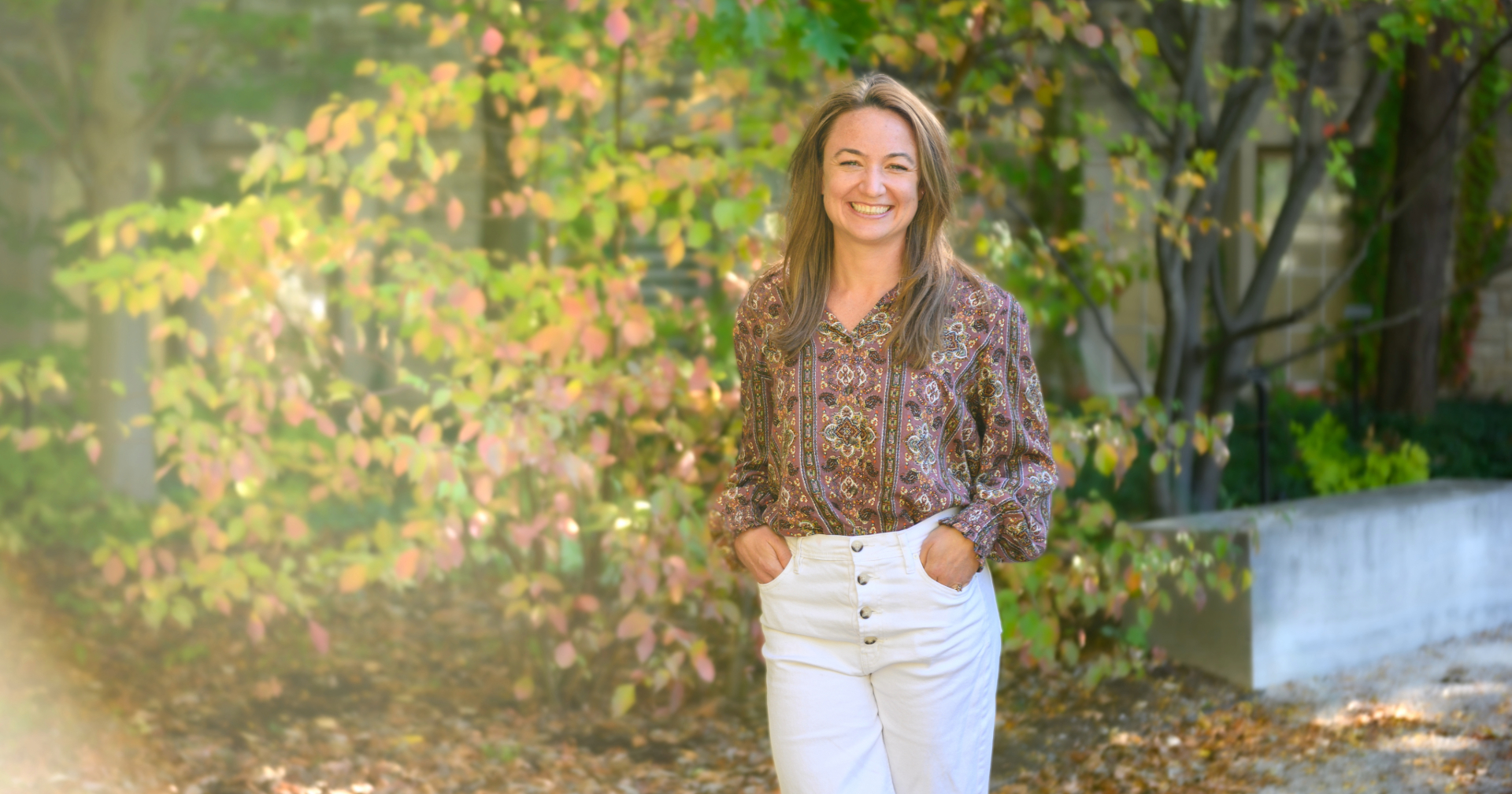Education
Neuroscientist Breanne Kearney Explores Body’s Memory of Trauma

Breanne Kearney, a recent PhD graduate from Schulich Medicine & Dentistry, has made significant strides in understanding how trauma affects the brain’s sensory-motor networks. Kearney’s journey began with a six-year-old boy who had faced numerous challenges in his early education, including multiple school expulsions. Arriving in her care angry and withdrawn, he engaged in movement and play therapy, which ultimately led to his successful graduation from first grade. This experience transformed Kearney’s professional path, shifting her focus from occupational therapy to academic research.
Kearney’s groundbreaking research, conducted under the supervision of Dr. Ruth Lanius, delves into the intricate relationship between trauma, sensory processing, and the body’s memory. She employs functional MRI technology to study adults suffering from post-traumatic stress disorder (PTSD). “Many people with trauma feel it in their bodies – tension, pain, or visceral unease. We wanted to know what parts of the brain correspond with this sense of reliving things somatically in the body,” Kearney explains.
Exploring Innovative Therapies for Trauma
One of Kearney’s notable contributions to the field is her exploration of an emerging psychotherapy known as deep brain reorienting. This approach focuses on the body’s initial reflexive responses to traumatic experiences. “This therapy targets the shock response from the lowest part of the brain, before any thoughts or feelings,” Kearney elaborates.
In a recent clinical trial, Kearney and her colleagues observed significant improvements in participants’ symptoms, particularly among those who had not responded to conventional therapies. “It offers another option for people, especially those who don’t do well with exposure or talk therapy,” she says, highlighting the potential of this innovative treatment.
Kearney’s journey into neuroscience was somewhat serendipitous. Originally from Long Island, NY, she earned her degree in occupational therapy from the University of New Hampshire. A neurology course, which her peers often dreaded, sparked her interest in the field of neuroscience. After gaining experience working with children and adolescents facing neuro-developmental challenges in Portland, she pursued a master’s degree in cognitive neuroscience at University College London. A pivotal email to Dr. Lanius set the stage for her current research trajectory.
Kearney reflects on this transition, stating, “I still can’t believe I cold emailed Dr. Lanius, having no clue how much of a giant she is in this field. But I remember writing to her that I believed in this work more than anything.”
Combining Research and Clinical Practice
With her PhD now complete, Kearney’s commitment to both research and clinical practice remains strong. She is continuing her work at Schulich Medicine & Dentistry as a postdoctoral scholar while also pursuing the final stages of her licensure in Canada. Kearney plans to balance her time between research and occupational therapy, stating, “I’m passionate about having a foot in research while still keeping myself in the reality of seeing people in the clinic. It just gives me such a richer understanding.”
Her dedication to working with individuals, particularly children, is evident in her words: “That’s my heart’s work.” As Kearney continues to explore the complexities of trauma and its effects on the body, she remains committed to advancing therapeutic interventions that can make a meaningful difference in the lives of those affected.
Through her innovative research, Breanne Kearney exemplifies the vital intersection of clinical practice and scientific inquiry, paving the way for new understandings of trauma and healing.
-

 Education3 months ago
Education3 months agoBrandon University’s Failed $5 Million Project Sparks Oversight Review
-

 Science4 months ago
Science4 months agoMicrosoft Confirms U.S. Law Overrules Canadian Data Sovereignty
-

 Lifestyle3 months ago
Lifestyle3 months agoWinnipeg Celebrates Culinary Creativity During Le Burger Week 2025
-

 Health4 months ago
Health4 months agoMontreal’s Groupe Marcelle Leads Canadian Cosmetic Industry Growth
-

 Science4 months ago
Science4 months agoTech Innovator Amandipp Singh Transforms Hiring for Disabled
-

 Technology4 months ago
Technology4 months agoDragon Ball: Sparking! Zero Launching on Switch and Switch 2 This November
-

 Education4 months ago
Education4 months agoRed River College Launches New Programs to Address Industry Needs
-

 Technology4 months ago
Technology4 months agoGoogle Pixel 10 Pro Fold Specs Unveiled Ahead of Launch
-

 Business3 months ago
Business3 months agoRocket Lab Reports Strong Q2 2025 Revenue Growth and Future Plans
-

 Technology2 months ago
Technology2 months agoDiscord Faces Serious Security Breach Affecting Millions
-

 Education4 months ago
Education4 months agoAlberta Teachers’ Strike: Potential Impacts on Students and Families
-

 Science4 months ago
Science4 months agoChina’s Wukong Spacesuit Sets New Standard for AI in Space
-

 Education3 months ago
Education3 months agoNew SĆIȺNEW̱ SṮEȽIṮḴEȽ Elementary Opens in Langford for 2025/2026 Year
-

 Technology4 months ago
Technology4 months agoWorld of Warcraft Players Buzz Over 19-Quest Bee Challenge
-

 Business4 months ago
Business4 months agoNew Estimates Reveal ChatGPT-5 Energy Use Could Soar
-

 Business4 months ago
Business4 months agoDawson City Residents Rally Around Buy Canadian Movement
-

 Business4 months ago
Business4 months agoBNA Brewing to Open New Bowling Alley in Downtown Penticton
-

 Technology2 months ago
Technology2 months agoHuawei MatePad 12X Redefines Tablet Experience for Professionals
-

 Technology4 months ago
Technology4 months agoFuture Entertainment Launches DDoD with Gameplay Trailer Showcase
-

 Technology4 months ago
Technology4 months agoGlobal Launch of Ragnarok M: Classic Set for September 3, 2025
-

 Technology4 months ago
Technology4 months agoInnovative 140W GaN Travel Adapter Combines Power and Convenience
-

 Top Stories3 months ago
Top Stories3 months agoBlue Jays Shift José Berríos to Bullpen Ahead of Playoffs
-

 Science4 months ago
Science4 months agoXi Labs Innovates with New AI Operating System Set for 2025 Launch
-

 Technology4 months ago
Technology4 months agoNew IDR01 Smart Ring Offers Advanced Sports Tracking for $169










